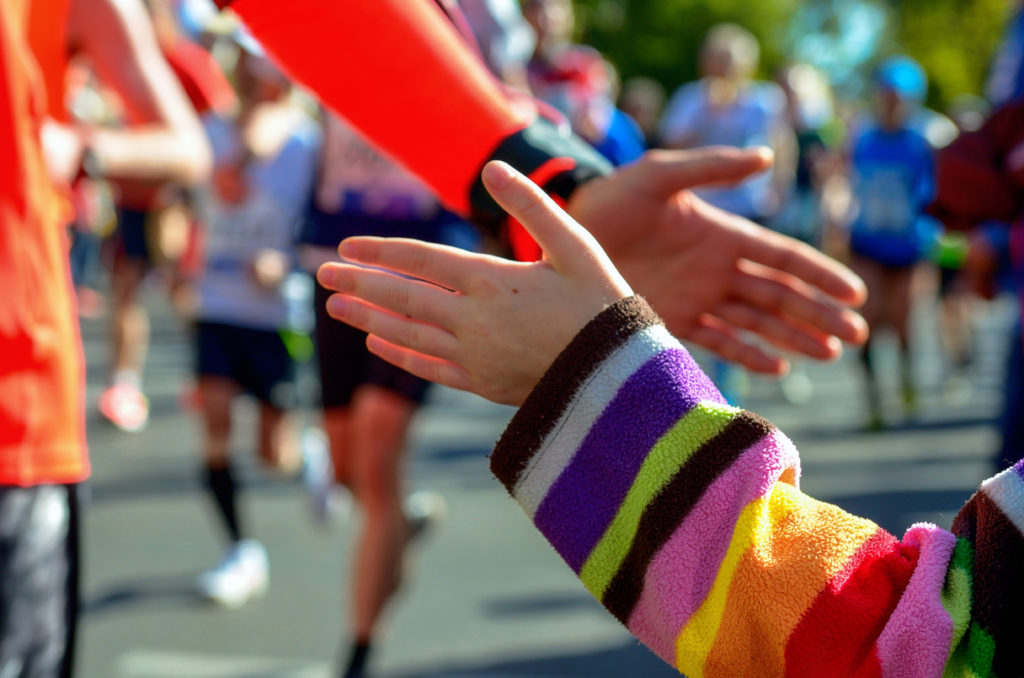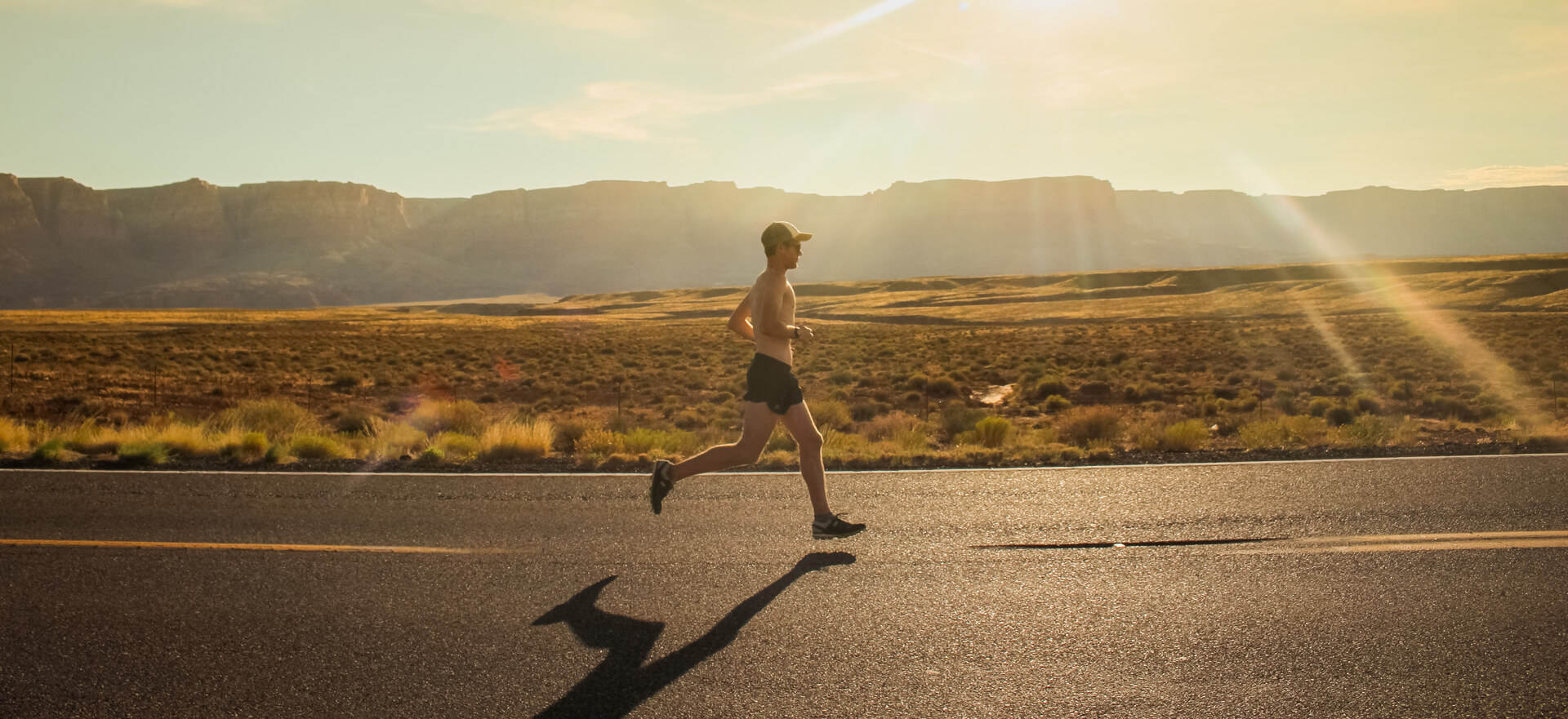
The finish line was right there. It was 2006, my first 10K race, and although I could see the finish line, I didn’t get the supposed last-minute adrenaline rush. Instead, my legs had turned to a strange combination of jelly and lead.
Suddenly, I heard my name, and saw in the crowd a friend who was loud enough to make himself heard over everyone else. He extended a hand and gave me a high five. As if by magic, I found that extra burst of energy and sprinted the last few hundred yards.
It had been very different the previous month when I’d entered a 5K race around the City of London. It was a baking summer day and although there was an enthusiastic crowd, there was also a lot of grumpy bankers pushing through the barriers and stomping in front of the competitors, irritated that their homeward commutes had been interrupted by oiks in running shoes.
That day I hated the crowd, which was blurring in and out of focus around me in the heat. I wanted to melt out of sight. No amount of support could help me, and the cheers felt like taunts.
“Running in front of a large crowd is a very public place to have a bad day,” says Andy Lane, professor of sports psychology at the University of Wolverhampton. These are two real examples of how the crowd can affect performance, but what is it about a bunch of people cheering that affects the wiring in the brain? This is where the scientists come in.
It’s all in the mind
“The noise of the crowd is both historical and cultural,” says sports psychologist Jeremy Lazarus. “We hear a cheer and associate it with happiness and approval, so we assume the people cheering are happy with us.”
“Smiling and cheering is a positive association that’s learned very early,” Lane adds. “There’s a deep-rooted connection between hearing a positive noise and feeling good, and facial recognition sends signals of approval or disapproval.”
Now the science. “Our response to the crowd is controlled by the limbic system in our brain, specifically the amygdala,” says Sarah Cecil, sports psychologist at the English Institute Of Sport.
“This triggers the fight, flight or freeze response, which was useful when we lived in jungles. It acts very quickly: imagine being in a jungle, and you jump when you see a stick because you think it’s a snake. That’s better than not jumping and it actually being a snake.”
The key is how we process this information.
“If you fight, you maybe obsess about beating one person close to you. If it’s flight, you make excuses for your performance. If you freeze, your mind goes blurry and you can’t think straight.” The perceived threat is of looking foolish or failing in front of a crowd, but in your case they are likely to be supportive. “It’s our perception that makes a situation threatening,” Cecil says.
In this together
The professionals race abroad and have to face indifference or negative reaction, but they have access to sports psychologists and are aware of how to use support for their own ends.
“The crowd can perform an intervention in terms of how you’re feeling and performing,” says Lane. “If you’re not that motivated or you’re struggling, the crowd can transmit excitement.” Although it’s unlikely to happen to you, even being booed can be turned into a positive.
“Huge chunks of the brain are unconscious, and you want people to be non-judgemental,” says Cecil. “You can’t always control your unconscious so you have to turn it into a positive. Forget the past, don’t think about the future – think in the present. It’s a mistake to try to control your reaction, but you can use the crowd as a trigger to focus on technique or pace.”
The crowd’s biggest strength is that they can, without even realising, help an athlete to overcome pain. “When you got your high five, it changed your focus,” Cecil tells me. “You felt happy, you got a surge and it changed your mood. It’s OK to feel tired, but when you feel happy your body feels different. Your brain determines how you feel physically, and that’s very closely linked to your emotions.”
Managing emotions and effort
The surge is a key point here – so long as you haven’t shot your bolt. “Sometimes at the Olympics you see marathon runners collapse when they enter the stadium because they have nothing left in the tank, and no amount of crowd support can help them,” says Lazarus. “But if you have enough energy left, a cheer from the crowd has the same effect as being able to see the finish line. You get a rush of adrenaline and forget the pain you’re in.”
This, however, is not true of everyone. Some people find a crowd intimidating, and don’t like being watched. “People respond in different ways. When external stimuli reach us, they are affected by internal factors such as our beliefs, experiences and personality traits.
What we interpret as pressure, some people subdivide into ‘good’ or ‘bad’,” says Lazarus. “If someone truly believes they belong, that they’re good enough, they respond and use the crowd. But others may have had a bad experience in the past, or feel that they don’t deserve success – it may be buried deep inside to the point where they’re not consciously aware of their feelings.”
Think small
Those who fear the crowd can enter smaller, more remote races or simply practise getting used to a crowd in a race that is, to you, less important. “No one wants to be caught on TV grovelling because they have nothing left,” says Lane. “There are plenty of races before the London Marathon that can get you used to running in front of a crowd – the Silverstone, Birmingham or Bristol half marathons, for example.”
Some people slip on an MP3 player, although many races now ban music. “It can have a positive effect if you find the crowd off-putting because it can simply block out the noise,” says Lane.
Either way, you’re better off learning to use the crowd to your advantage. “There are simple neuro-linguistic programming techniques that can help change your own internal beliefs,” says Lazarus (see thelazarus.com). “In other words, you can train the brain to allow in only good signals from the crowd.”
HOW TO TRAIN YOUR BRAIN
If you use your brain to your own advantage, you can do the same with the crowd. “Choose how they perceive you before the race,” says Cecil. “They want you to do well. If your brain gets blurry, ask yourself: is this life or death? If you decide it’s not, concentrate on breathing and ‘centring’, and then you can think more logically.”
On the flipside, you can create a crowd in your own head if you’re taking part in a remote race. “A virtual crowd is just another form of visualisation,” says Lazarus. “Think of a time when the crowd was cheering you and associate it with a physical trigger, such as squeezing a thumb and forefinger together, which you can use in a race.”
“You can also think of people close to you and what they would say to you,” says Lane. “The idea of people cheering is important but you don’t need a crowd. Have two or three motivational phrases and repeat them to yourself a couple of times when it matters.”
The key point to remember is that the crowd wants you to do well, whether that’s win, set a new PB or simply finish. Unless you’re an elite runner on foreign soil, you’re unlikely to encounter favouritism any worse than the family of that guy on your shoulder screaming at him to leave you for dead in the sprint for the line.
“Consider this,” says Lazarus. “Does a two-year-old feel pressure? No. Who says a race is ‘pressure’? It’s life experiences that give an event meaning and context. No one ever gets anxious about doing well – you worry about doing badly, about what’s going to happen. Elite athletes are able to live ‘in the moment’ and shut out everything else.”
Put it in perspective. “When you’re training, your next race should be the most important thing in your life,” says Cecil. “But on the day, it’s just a race. Enjoy it, and remember that a big crowd can help you.”
HOME ADVANTAGE
How the crowd inspired three very different British athletics victories
Wyndham Halswelle
Olympic 400m, 1908
There was controversy in the 1908 London Olympics 400m final when, in the days before the race was run in lanes, American John Carpenter was adjudged to have impeded Halswelle (by virtually running him off the track).
No doubt influenced by a baying crowd at the White City Stadium, officials declared the race null and void, disqualified Carpenter and ordered a re-run. The other two Americans withdrew in protest. Given that Halswelle was the only other finalist, he completed a lap of the stadium on his own to take gold – the only walkover in Olympic history.
Roger Bannister
Four-minute mile, 1954
Bannister’s historic achievement of becoming the first man to break the four-minute-mile barrier is part of British sporting folklore. His record of 3:59.4s came on the windy Iffley Road track in Oxford.
At the end of the race, the stadium announcer drew out proceedings for as long as possible, but once he’d uttered the words, “The time was three…” the rest of Bannister’s finishing time was drowned out by the cheers of the 3,000-strong crowd that had roared him into the history books.
Mo Farah
Olympic double, 2012
Farah elevated himself to the summit of long-distance running on 4 August 2012 when he was cheered to victory in the Olympic 10,000m final in London, on a night when Jessica Ennis and Greg Rutherford also struck gold. A week later, Farah won the 5,000m title on a rare occasion when an athlete peaked at a major games on home soil.






